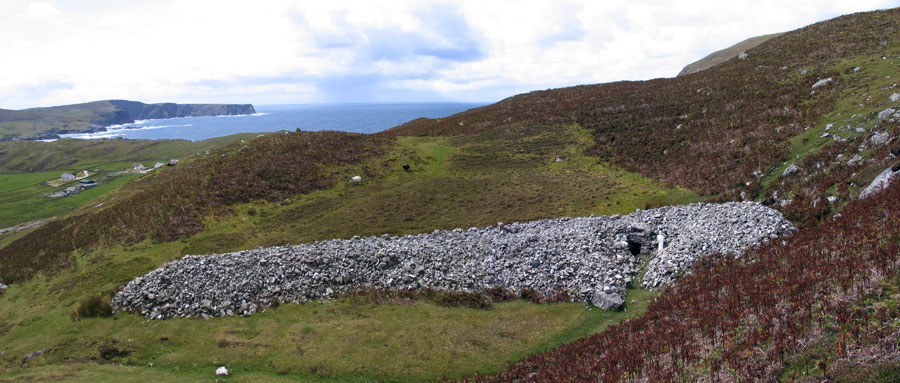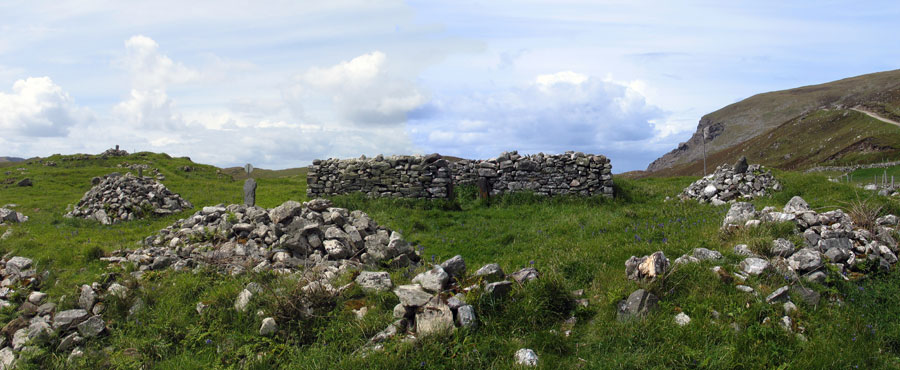Columba's church and well.
At the west end of the valley of Glencolumbkille, perched on a rocky outcrop, stands the church of Columba where he is said to have stayed when visiting the settlement there. The church is located on an interesting and powerful site: a huge vein of white quartz runs through the outcrop. Quartz is a magical stone, widely used throughout the neolithic period to cover the facades of monuments such as Newgrange. There are many chunks of white quartz to be found on the cairns and altars around the Glen.
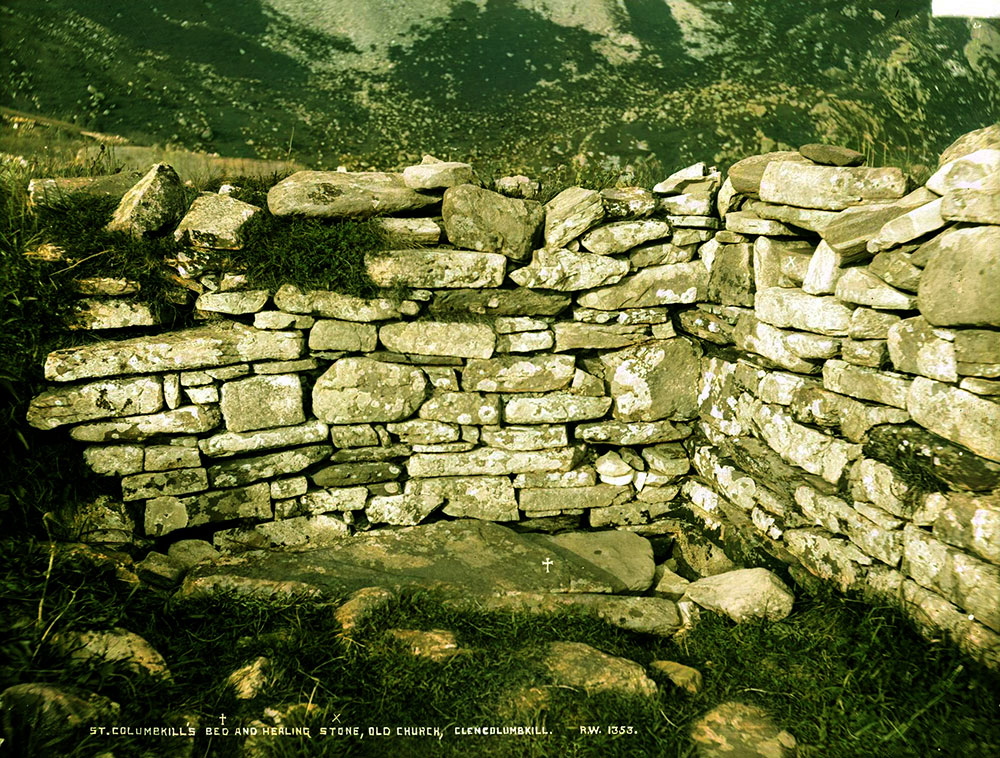
The stone church measures six by four meters and has a door facing east, with a fine view out across the valley. Within the church, in the north corner is a long flat slab known as Columbkille's bed. The early Irish saints were quite aesthetic and were known for lying out on slabs of rock and watching the heavens. In a small stone shelf above the bed are two round beach stones, said to have healing properties. There is a lovely peaceful atmosphere in this church.
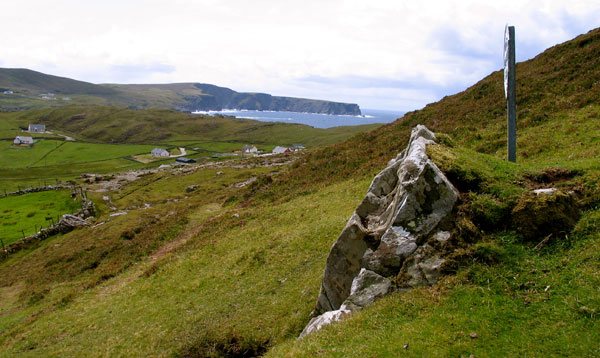
Outside and around the church are three cairns of stone, each with it's small cross slab. These cairns are part of the Turas: pilgrims circle the cairns reciting prayers. The cairn furthest from the church is set within a ring of stone that may be a prehistoric hut site.
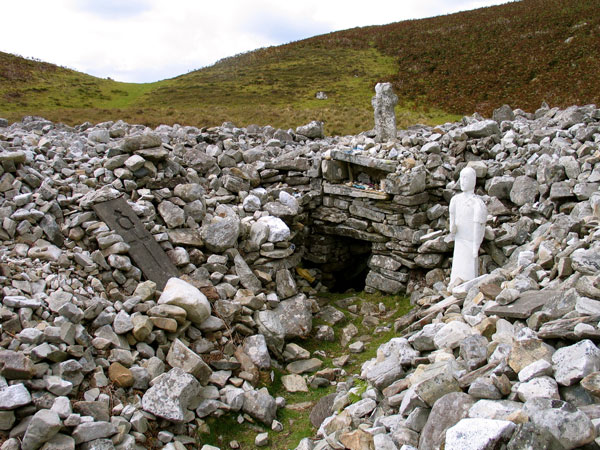
Columba's well is up the hill to the north from the church. On the way you pass Columba's Chair, a natural rock with a hollow and a very fine view. The well itself is a strange affair: a massive prehistoric looking long cairn of stones in a little hollow on the side of the hill. There is a small well house built into the cairn with a rough cross slab on top. There are two stone shelves with offerings left by pilgrims.
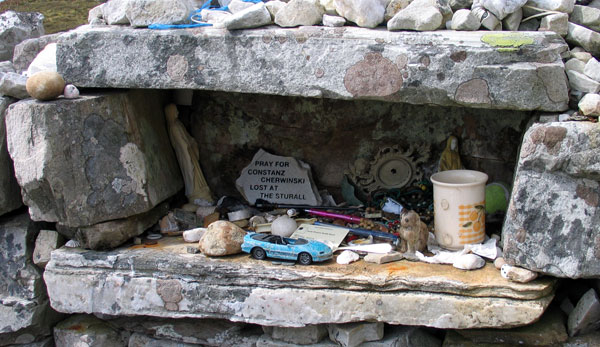
Columbkille is said to have founded some thirty-five monasterys in Ireland before leaving for Iona. Other famous monastic settlements are Derry, Drumcliffe, Durrow and Kells. The latter two are associated with the beautiful Books of Kells and Durrow. The monks who followed Columba were extremely artistic and talented, and also produced many of Ireland's most famous high crosses.

